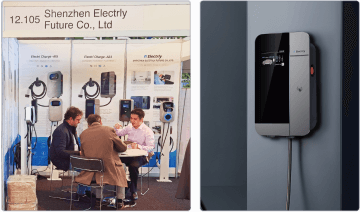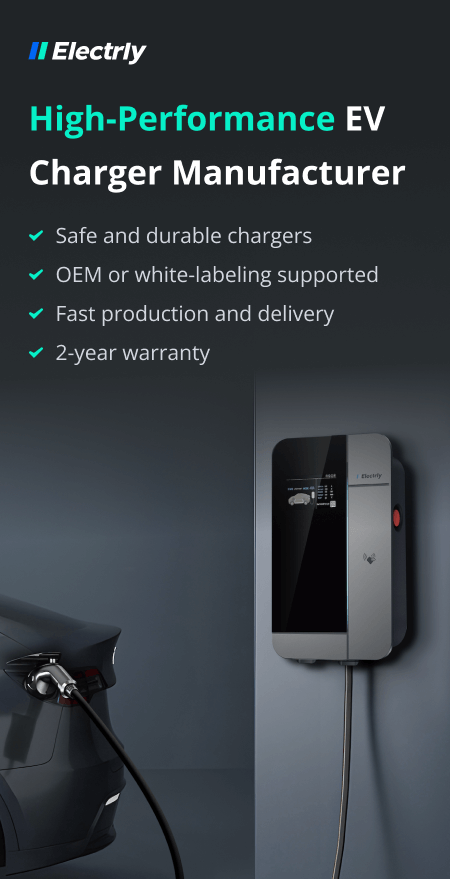An electrical current is always either AC (alternating current) or DC (direct current). An EV battery requires DC - so how does a DC fast charger work?
In the world of electric cars, you'll come across two types of chargers: AC and DC. AC chargers (such as those in your home) switch to DC using a converter in the vehicle itself. In contrast, DC fast chargers (like certain publicly available models) convert from the grid's AC before the current reaches the car.
This article explores why DC fast chargers charge your EV quicker than other types.
How Fast Is DC Charging?
As a general rule, DC fast chargers charge your EV much quicker than AC chargers, usually within an hour. This is simply because they use more power, forcing your battery to charge faster.
As will be explained in further detail in the next section, providing an exact figure for the speed of DC fast charging is impossible.
It depends on various factors, including the following:
- DC fast charger power capacity
- EV acceptance rate (see the next section)
- Starting and finishing charge levels
- The weather (fast chargers struggle in extreme cold, in particular)
- Etc.
Make the most of the speed of DC fast chargers by following a few simple pieces of advice:
- Set a charge limit of 80% in your car. Many studies on lithium-ion batteries conclude that charging beyond this point increases wear. The charging power also drops off significantly, so you should unplug it to allow someone else to charge their EV.
- Regularly check your car's charge state by using an app, checking the onboard infotainment system, or peering through the window.
- Check your car's acceptance rate (found in the owner's manual). There's no point spending a long time looking for a powerful DC fast charger when your car can't charge faster than its acceptance rate anyway!
- Drive economically as much as possible, making the battery charge last as long as possible.
How Do DC Fast Chargers Work?
When you use a Level 1 or Level 2 charger, it draws AC from the grid (all the power on the electrical grid is single- or three-phase AC). Storing chemical energy in a battery, ready to release it as an electrical charge, requires DC, so the alternating current must go through an AC/DC converter.
Your electric car has an AC/DC converter in its charging system. The converter has a certain power ('Wattage'), the rate at which it changes AC to DC. For example, most Teslas have an 11.5 kW converter at a max current of 48 amps. (Except for the Model 3 RWD, which has a 7.7 kW converter at 32 amps.)
In a DCFC (DC fast charger), though, the converter can be found in the charge point itself (as opposed to the car). For this reason, it can be much larger and, therefore, more powerful.
You'll find fast chargers ranging from 15 kW to 350 kW, with ongoing research and investment responsible for an ever-increasing rate of technological growth. For instance, the newest generation of Superchargers in the Tesla network have power capacities of 250 kW.
Once you connect the fast charger, your vehicle's limitations come into play.
Each model will have a different 'acceptance rate'. For example, if your EV has a maximum acceptance rate of 50 kW, it will charge at approximately the same speed and power whether you use a 50 kW or a 250 kW DC fast charger.
These acceptance rates protect the car's batteries. Generally, older EVs have much lower acceptance rates than newer models.
The maximum charging power kicks in soon after plugging in (although, again, all cars are different). Once the charge level reaches 80%, the power drops significantly to protect the lithium-ion batteries.
Different Types of DC Fast Charging Connectors
In North America, there are three main types of EV connectors:
- CSS
- CHAdeMO
- Tesla
CSS1 connectors are used by the vast majority of manufacturers, Tesla aside. They account for all types of charging - single- and three-phase AC as well as DC. Since they're used worldwide, CSS connectors are the jack of all trades when it comes to EV charging. Europe uses CSS2, a slight variation on the same system.
CHAdeMO connectors can still be found on some EVs, but they will likely be phased out in North America before long. Cars requiring a CHAdeMO connector have a separate DC charging port next to the AC one. It's this separation that has made CSS the favored option. CHAdeMO is still the go-to in Japan and other parts of Asia.
Finally, you'll be familiar with the Tesla Supercharger connector. The Supercharger network is now open to all vehicles, although non-Tesla models will need to use the on-site adapter.
Learn more: EV Charging Cables and Plugs >>
How Much Does It Cost to Use a DC Fast Charger?
The cost of using a DC fast charger varies. You'll pay per minute in some places, while it's per kWh elsewhere.
In the US, you'll likely come across DC fast chargers costing between $0.25 and $0.35 per minute. DC charging stations priced based on kWh usage typically range from $0.30 to $0.50 per kWh.
A DC fast charger will cost more than a standard Level 2 AC charger. You're paying extra for the convenience of charging your EV quickly. In fact, DC chargers might be two or three times the price of an AC unit!
For example, the Electrify America Queens Center Mall chargers in New York cost $0.48 per kWh (for guest users - $0.36 per kWh with Pass+). The EVGo CSS/CHAdeMO chargers at DALIA on nearby Prospect Avenue cost $0.35 per minute.
Let's use an example. If you plug your Tesla into the 50 kW EVGo DC charging station for an hour, you'll likely get about 45 kWh in your batteries (accounting for inefficiencies). This would cost you $21.
The same 45 kWh at the Electrify America DC fast charger would come to $21.60, down to $16.20 if you were a member.
In contrast, 45 kWh at a Level 2 public charging station would cost you about $9, and using a wall charger at home would cost around $6.
DC Fast Charging (Level 3) vs. Level 2
In short, Level 3 DC charging stations can charge your car much quicker than Level 2 stations. Level 2 chargers are the 'standard' AC models, such as the wall chargers you get installed at your home.
It's vital to note that Level 2 AC chargers come with J1772 connectors, compatible with almost all North American EVs apart from Teslas. Level 3 charging stations are either CSS, CHAdeMO, or Tesla, as mentioned above.
Level 3 chargers use 480 volts, whereas Level 2 units use 240 volts. Of course, this means Level 3 chargers are much more expensive to buy and install, a cost that passes onto the customer.
Assuming you have a modern EV with a significant acceptance rate and use a high-powered charger, a Level 3 unit could charge your car from empty to 80% in around half an hour. It would likely take a Level 2 charger several hours to do the same thing.
Learn more: Level 2 vs. Level 3 EV Charger >>
Can I Install a DC Fast Charger at Home?
You can't install a DC fast charger at home.
Unfortunately, that's just the way it works right now. Residential setups just aren't equipped to handle the massive electrical loads required for a Level 3 fast charger.
Instead, as mentioned previously, Level 3 DC fast chargers are owned by private companies such as EVGo and Electrify America. Of course, Tesla has a vast network too.
You can install a Level 2 charger at your home with the help of a qualified electrician. The standard wall charger is a common example.
Disadvantages of DC Fast Charging
Here are the two main disadvantages of using DC fast chargers: the cost and the potential for increased battery wear.
- DC fast chargers are really expensive. As explored above, you may pay two or three times more than a standard Level 2 charger, especially the one at your home.
- Don't use a DC fast charger every time. Although studies are still somewhat inconclusive, it's likely that always using a DC fast charger will cause the battery to wear out faster.
- Level 3 chargers are becoming more common, but they're still being introduced nationwide.
These disadvantages mean you should use a Level 3 DC charger when needed, but not necessarily regularly. For example, they're wonderful on long road trips or when you need to take an unexpected detour. But in most everyday scenarios, you should stick to the wall charger at your home.
It's often sensible to plug into a Level 3 charger for 15 or 20 minutes. Get enough range in the tank to reach home and finish charging there.
How Can I Find DC Fast Charging Stations Near Me?
Most Level 3 charging stations are in retail parking lots and at rest stops on busy roads.
You'll want to know what type of charge connector you need. Most EVs will require a CSS, although you might need a CHAdeMO. Of course, you must look for a Tesla Supercharger if you have a Tesla.
Check out the charger locators at Electrly and find the right DCFC near you!


